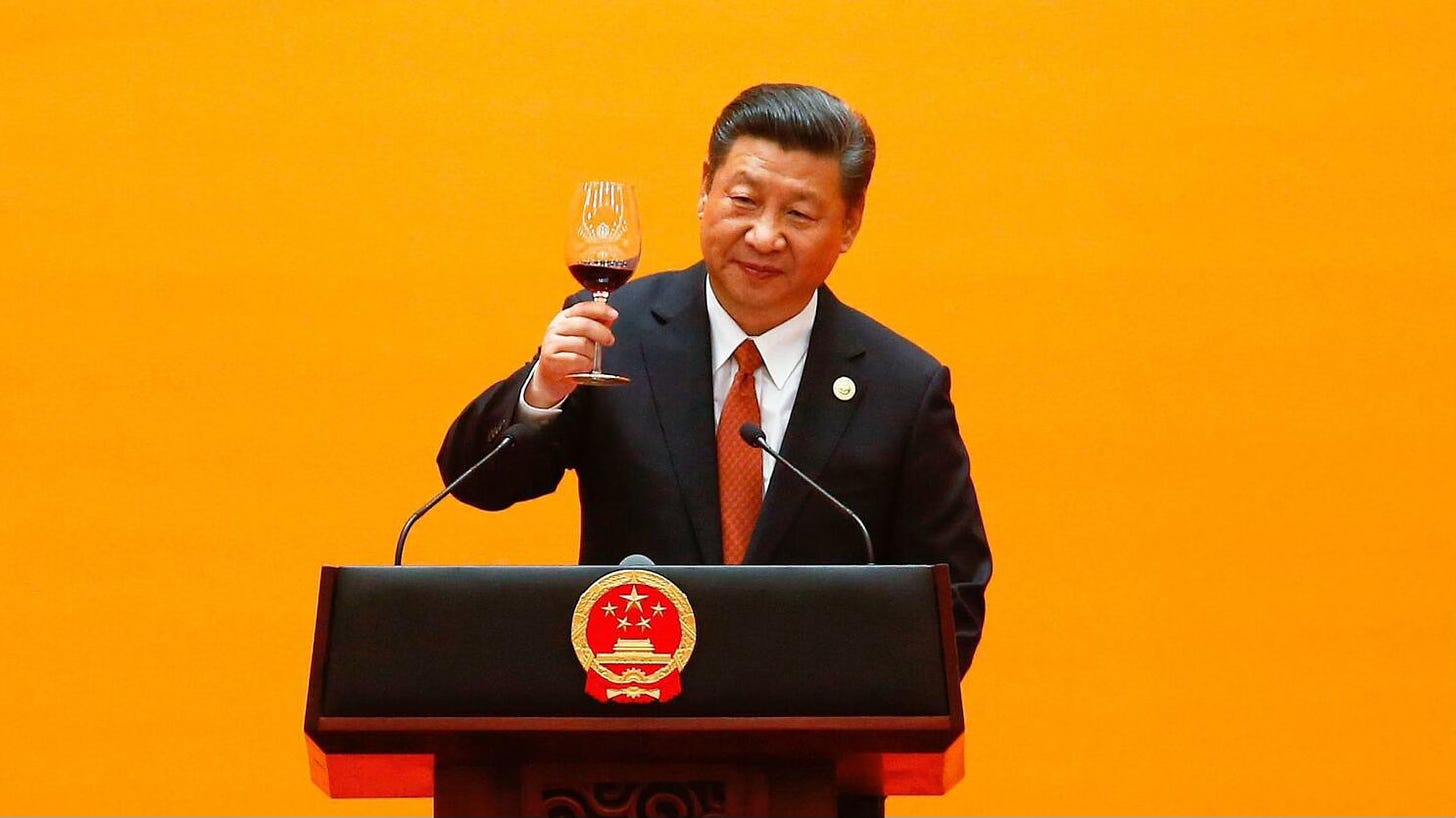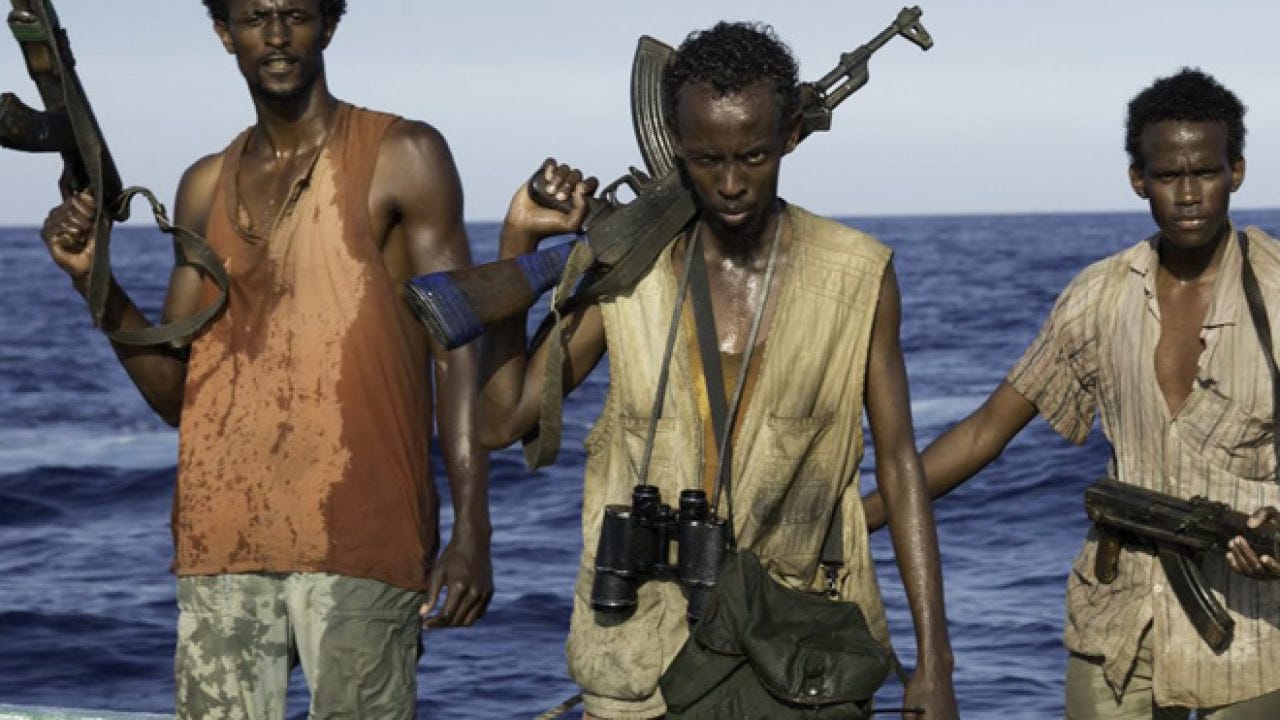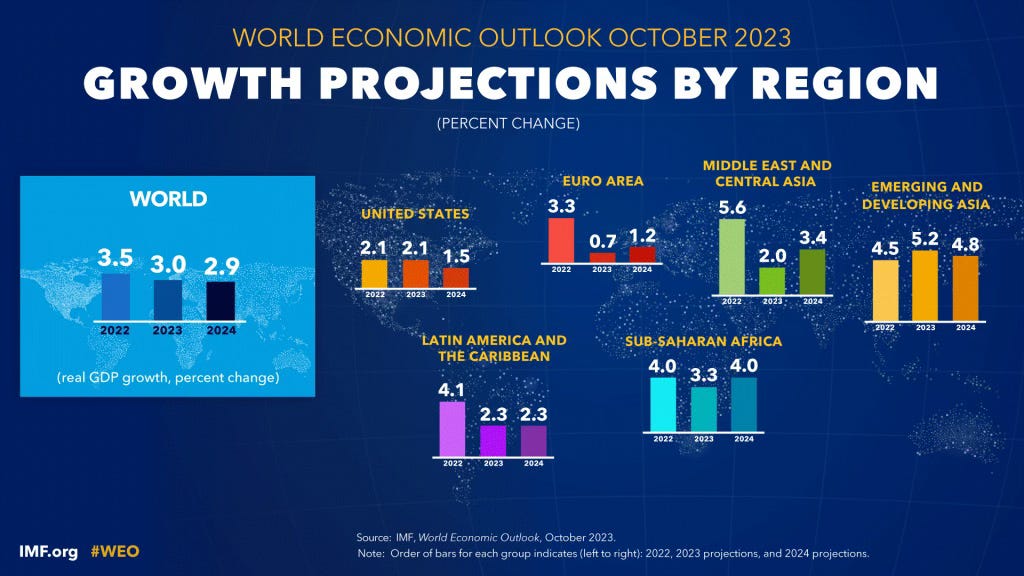The Good, the Bad and the Ugly
UPDATE: Over the past decade, BRI cooperation "has delivered real gains to participating countries," said the white paper published by State Council Information Office titled "The Belt and Road Initiative: A Key Pillar of the Global Community of Shared Future".
The Somali case is important because it’s one of the few success stories in recent years where the use of limited force contributed to a sustainable outcome. Further, Somali pirates were stopped even though the conditions onshore in Somalia didn’t improve in any major way.
Speaking at the annual meetings of the IMF and World Bank, chief economist Pierre-Olivier Gourinchas said there was a continued global economic recovery from the pandemic, the outbreak of conflict in Ukraine and the subsequent energy crisis, but an increasingly divergent global picture was emerging.
Belt and Road Initiative White paper
On the occasion of the 10th anniversary of the Belt and Road Initiative(BRI), China's State Council Information Office released a White Paper titled "The Belt and Road Initiative: A Key Pillar of the Global Community of Shared Future" on October 10. The white paper comprehensively reviews and summarizes the development process of the BRI over the past 10 years, from its inception as a Chinese initiative to its international implementation, showcasing tangible achievements. It can be said that the white paper serves as both a report card for the past decade and a grand blueprint for the future of the Belt and Road cooperation.
From the visionary "freehand sketch" in its initial conception to the meticulous "fine brushwork" in its execution, the achievements of the BRI over the past 10 years have far exceeded the initial expectations. In terms of geographic scope, more than 150 countries and over 30 international organizations have joined the Belt and Road cooperation, encompassing over half of the world. In terms of the areas covered, it includes various fields such as economics, culture, and ecology.
Whether it's the "hard connectivity" of land roads and sea routes, the "soft connectivity" of cooperation in deepening rules and standards, or the "heart-to-heart connectivity" in fields like education, culture, sports, tourism, and archaeology, the BRI has woven a vast network of cooperation and mutual benefit across the globe. The white paper provides a wealth of data and examples that unquestionably demonstrate how the BRI has brought tangible benefits and dividends to the participating countries.
These achievements have been made step by step, inch by inch, by all participating countries. The BRI is a magnificent endeavor in the global concept and practice of shared development. It inevitably involves a process of continuous practical exploration, learning, summarizing, and adjustment. But even those who view the BRI through the thickest colored glasses cannot ignore or deny its influence.
If it weren't for the fact that the BRI aligns with the interests of all participating countries and even all of humanity, conforms to the laws of social development, and addresses the needs of the global economic market, it would never have come this far and wide. What exactly is the appeal of the BRI? The white paper provides a detailed and precise answer to this question through five comprehensive chapters spanning 28,000 words, which can be summarized as follows: The BRI has paved a new path for humanity to jointly achieve modernization.
To accomplish such a significant undertaking, hardships as well as twists and turns are foreseeable and inevitable. The future BRI cooperation is also unlikely to be smooth sailing, and will certainly face and overcome new difficulties, challenges, and even risks. However, with the foundation laid in the first decade, the consensus formed, and the accumulated experience, we have sufficient confidence in the increasing prosperity and broadening of BRI. In fact, the BRI cooperation has deeply embedded itself in the common destiny of humanity. In other words, the future of the BRI will reflect the common destiny of humanity.
Looking at the distribution of countries participating in the BRI, we can observe an interesting phenomenon. Developing countries hold a consistent positive attitude toward the BRI cooperation, while developed countries do not necessarily share the same sentiment. Of course, developing countries have heavier development tasks, but the BRI has never excluded any country and hopes for the participation of as many countries as possible, including developed ones.
The US also once showed interest in joining the BRI, but as the policy of containment toward China dominates in Washington, the US has instead poured cold water on and even undermined the BRI. At the same time, the US and Europe are both introducing alternative plans for BRI. From this perspective, imitation is actually the greatest affirmation. Although the BRI was proposed by China, once it was born and implemented, it belongs to the whole world, with extensive consultation, joint construction, and shared benefits. There is no need to divide it into different versions based on camps.
The future of BRI cooperation holds a lot of opportunities and requires more imagination, and it is also worth looking forward to. As the white paper points out, the BRI is a long-term, transnational and systematic global project of the 21st century and it has succeeded in taking its first step on a long journey. During these 10 years, the BRI has made many good friends around the world, and in the future, we look forward to more countries and regions joining in, making BRI cooperation a grand chorus for all of humanity.
Download BRI White paper here.
Somali piracy interrupted
By Peter Viggo Jakobsen
In 2011, pirates carried out 212 attacks in a vast area spanning Somali waters, the Indian Ocean, the Red Sea and the Gulf of Aden, actions that the World Bank said cost the world economy US$18 billion a year. Armed pirates hijacked ships as far away as 1,000 nautical miles from the Somali coast. They held the ships and crews for ransom. The World Bank estimates that Somali pirates received more than US$400 million in ransom payments between 2005 and 2012.
The piracy problem appeared unsolvable. Anti-piracy naval missions undertaken by the world’s most formidable navies, and self-protection measures adopted by the shipping industry, didn’t seem to work. It was, therefore, generally held that the solution lay ashore: major state-building in Somalia to remove the root causes of piracy.
The only problem was that no one was willing to undertake such a mission in the wake of America’s failures in Afghanistan and Iraq. And then there was an astonishing turnaround. The number of attacks fell to 10 in 2012 and only two ships were hijacked between 2013 and 2023.
For three decades, I have conducted research on international diplomacy, military strategy, use of force and peacebuilding. Together with a colleague specialising in military strategy, I analysed the Somali piracy case. Academics and practitioners agree that four factors interacted to stop the pirates:
the conduct and coordination of several anti-piracy naval operations by the world’s most capable navies, including all five permanent members of the United Nations Security Council: the United States, the United Kingdom, France, Russia and China
the implementation of costly self-protection measures, not least the use of armed guards, by most flag states and shipping owners
development of a comprehensive legal toolbox enabling pirate prosecution and imprisonment
regional capacity-building making it possible to imprison pirates regionally and in Somalia.
The surprising thing is not that the four measures on their own proved sufficient to stop Somali piracy. What makes the Somali case special is the international community’s ability to agree to them and pay for their implementation.
The Somali case is important because it’s one of the few success stories in recent years where the use of limited force contributed to a sustainable outcome. Further, Somali pirates were stopped even though the conditions onshore in Somalia didn’t improve in any major way.
Collective action
Theoretically, the international community’s collective effort shouldn’t have happened because safety from piracy is a costly public good.
This means that it’s very expensive to provide but no one can be prevented from enjoying it once it has been produced. The result is a collective action problemthat’s rarely overcome in international politics. Most actors prefer to free-ride rather than contribute to the production of the public good.
With respect to Somali piracy, all states and shipping owners had an incentive to leave it to others to solve the problem for them. The implementation of the four factors was very expensive for the states contributing to naval operations, and for shipowners who had to pay for self-protection measures, including hiring of armed guards.
Our study sought to understand how and why the collective action problem was overcome. The hope was to learn something that could help with overcoming similar problems in the future.
What worked
We found that three factors explain why the amount of free-riding was minimised in the Somali case.
The first was that the Somali pirates attacked ships belonging to all five permanent members of the UN Security Council and all the major shipping companies. This induced France to take the lead in military action against the pirates. The US subsequently led with respect to formulating a comprehensive strategy to implement the four factors presented earlier.
The involvement of European Union and the North Atlantic Treaty Organization (Nato) in the anti-piracy naval operations made it hard for member states not to contribute. A total of 18 member states contributed ships. China and Russia supported the American-led strategy and launched their own naval operations because their ships were attacked as well.
Second, the US established an institution, the Contact Group on Somali Piracy, tailor-made to formulate and implement a broad anti-piracy strategy. The US handpicked who would lead various working groups so that it contained all the actors – state and non-state – that were required to implement the necessary measures. These actors provided the expertise and the material resources required to implement the four factors presented earlier.
Third, the Somalia federal government and federal member states cooperated closely with anti-piracy efforts. They allowed the use of force against pirates in its national waters and on land. Somali authorities also cooperated with respect to the construction and running of pirate prisons paid for by international donors. This made it possible to overcome the piracy problem without engaging in the major state-building operation that had generally been viewed as a necessary condition for success when the piracy problem peaked in 2011.
Shared interests
Unfortunately, this success story will be hard to replicate. Somali piracy aligned great power, as well as private sector, regional and local state interests to an unusual degree. This is, for example, not the case in the Gulf of Guinea off the west African coast. Here, local states are less cooperative with respect to tackling piracy than Somali governmental actors were.
It’s also not the case with respect to tackling the coups in west Africa, where Russia, the three western members of the UN Security Council and regional states have conflicting interests.
It was the high degree of shared interests among the many actors involved that made the Somali anti-piracy campaign so effective.
Read more here.
IMF says global economy prospects bleak
Speaking at the document's launch in the Moroccan city of Marrakech on Tuesday, where delegates from 190 countries have gathered for the annual meetings of the IMF and World Bank, chief economist Pierre-Olivier Gourinchas said there was a continued global economic recovery from the pandemic, the outbreak of conflict in Ukraine and the subsequent energy crisis, but an increasingly divergent global picture was emerging.
The baseline forecast is for global growth to slow from 3.5 percent in 2022 to 3.0 percent in 2023 and 2.9 percent in 2024.
"The global economy is showing resilience," he said during the press meeting. "It's not knocked out by the big shocks it's experienced in the last two or three years, but it's not doing too great either. We see a global economy that is limping along and it's not quite sprinting yet."
The latest quarterly outlook was finalized on Sept 26, before the recent outbreak of conflict in Israel and Gaza, a situation the outcome of which is still so unclear that Gourinchas said it was impossible to quantify its impact.
"Depending how the situation might unfold, there are many very different scenarios that we have not even yet started to explore, so we can't make any assessment at this point yet," he conceded.
The IMF raised its forecast for US growth to 2.1 percent for 2023, and to 1.5 percent for next year.
The report said China's GDP is expected to expand by 5.0 percent in 2023 and 4.2 percent in 2024.
The IMF cut its estimates for eurozone growth to 0.7 percent in 2023 and 1.2 percent in 2024.
Influencing factors
Rising interest rates and extreme weather events were mentioned as other factors contributing to overall global output for 2023 which is slated to be 3.4 percent lower than projections from before the pandemic, with the longer-term outlook barely any more optimistic.
The IMF's projected growth figure for 2028, 3.1 percent, remains well below the 4.9 percent five-year forecast made just before the financial crisis of 2008-09.
"You have uncertainty. You have geoeconomic fragmentation, low productivity growth, and low demographics," explained Gourinchas.
"You put all these things together and you have a slowdown in medium-term growth."
The IMF sees global consumer price inflation dropping from 8.7 percent in 2022 to 6.9 percent this year and 5.8 percent in 2024.
The IMF again expressed concern that the countries of the world were breaking into geopolitical blocs that could limit international trade and economic growth globally.
Read more here.





